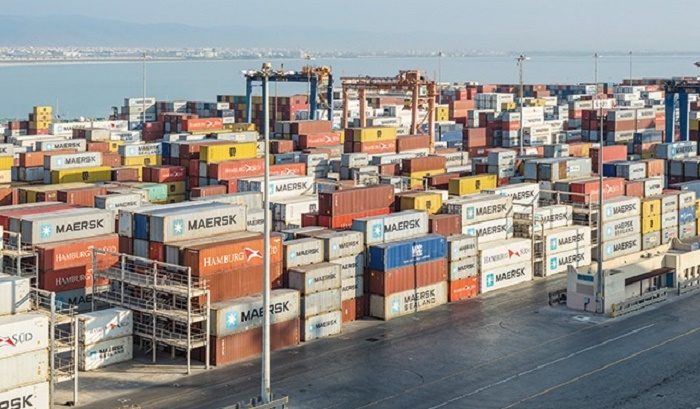
Muscat: Exports from Oman soared by more than 50 percent between 2021 and 2022, according to data published by the government.
A 55.9 percent rise in exports was recorded between January 2021 and January 2022, reveal figures released by the National Centre for Statistics and Information, in its monthly statistical bulletin.
Merchandise exports from Oman totalled OMR17.145 billion last year. Revenue from oil and gas accounted for OMR10.03 billion, while non-oil exports brought in a further OMR5.79 billion. Re-exports earned the country OMR1.32 billion.
In 2022, exports of both oil and non-oil products in January outstripped their values for 2021. Oman earned OMR1.15 billion from oil and gas at the end of January 2022, compared to OMR724.8 million at the end of January 2021.
Similarly, non-oil exports in January 2022 amounted to OMR626.8 million, up from OMR370.4 million during the first month of 2021.
“For Oman, greater revenue will provide welcome budgetary relief in the short-term, after the economic impact of COVID-19,” said Dr CK Anchan, an advisor on economics, international trade and investments. “The government may use a portion of these earnings to invest in efforts to diversify the economy and energy investments, particularly renewable and hydrogen.”
Oman’s major non-oil exports over the past year include chemical products, which brought in OMR1.235 billion, base metals and metal products (OMR1.327 billion), minerals (OMR843 million), and plastics and plastic products (OMR890.5 million).
The country’s key imports include minerals (OMR2.18 billion), base metals and metal products (OMR1.51 billion), transport equipment (OMR1.22 billion), chemical products (OMR1.15 billion), prepared food and beverages (OMR605.5 million), vegetable products (OMR677.4 million), and live animals and their products (OMR577.4 million).
Expansion of Oman’s non-oil sectors is a major element of both Tanfeedh, the country’s economic diversification plan, and Vision 2040, which looks to build a sustainable, diverse economy and provide good living standards and employment opportunities to people.
In context to Oman and other Arab countries pursuing economic diversification programmes, a senior official at the World Bank had previously welcomed their efforts, particularly in light of the economic impact of the COVID-19 pandemic.
“There are lots of aspects of economic diversification,” said Issam Abousleiman, country director of the GCC countries, Middle East and North Africa at the World Bank. “One aspect is diversification of the economy: expanding existing sectors and developing new ones. Here Oman could focus on areas of comparative advantage.
“Oman should be focused on export markets for goods and services,” he added. “The first step for any oil rich country is to diversify into oil-related industries, usually the downstream petrochemical industries, beginning with the basics such as fertilisers, but then moving up the value chain through advanced plastics.
“In addition, Oman can look at its natural endowments and build on that. Oman has already diversified into the tourism sector,” explained the director. “With a stunning coastline of over 3,000 km plus attractive natural landscapes, historical monuments and a welcoming culture, it is well poised to capitalise on the tourism sector and its niche areas of eco-tourism and MICE (meetings, incentives, conferences and exhibitions).
“Other areas in which Oman might have a comparative advantage include logistics, given its geographic location, and food and agriculture,” he said.
“In addition, given the energy transition, Oman can move in taking advantage of the wind and the sun to expand renewable energy production that could reduce the cost of its own energy, reduce emission by helping meet its international commitment, and export excess energy as the GCC links its grid to other parts of the Middle East and North Africa and beyond.
“In choosing which areas to develop, the government looks at which areas will create opportunities for the country in global export markets and which will create high-paying jobs for Omani citizens,” he added.
The United Arab Emirates is Oman’s biggest export partner for non-oil goods, having imported OMR986.5 million worth of goods in 2021. The United States (OMR631.7 million), Saudi Arabia (OMR566.3 million), India (OMR478.5 million), and China (OMR377 million) are the other major countries to which Oman exports non-oil products.
The UAE is also Oman’s biggest source of imports, accounting for OMR4.2 billion in trade last year. While the country does import from India (OMR782.3 million), China (OMR832.3 million), Qatar (OMR756.1mn), and Brazil (OMR579.1mn), the value of trade with the UAE is much higher.